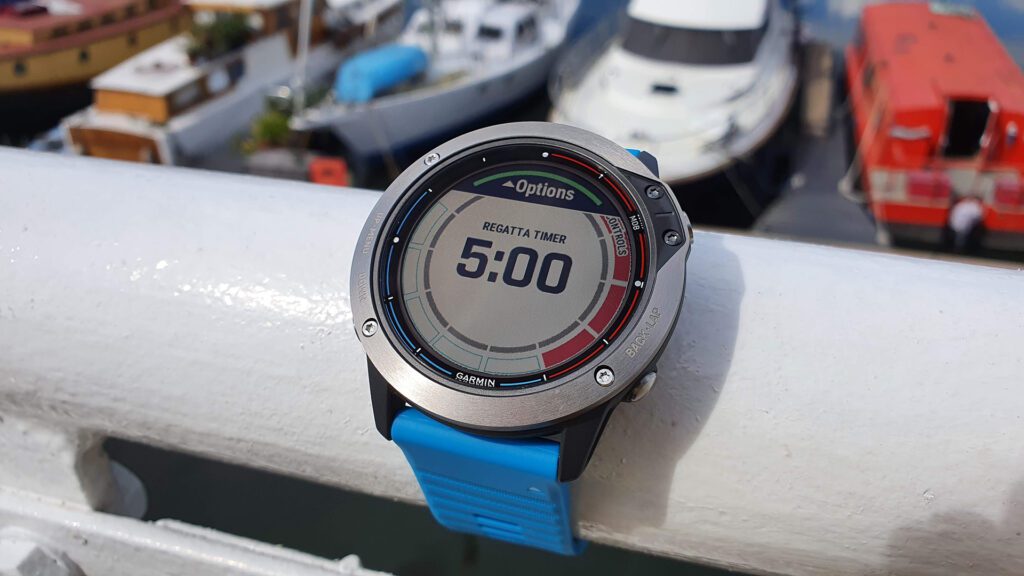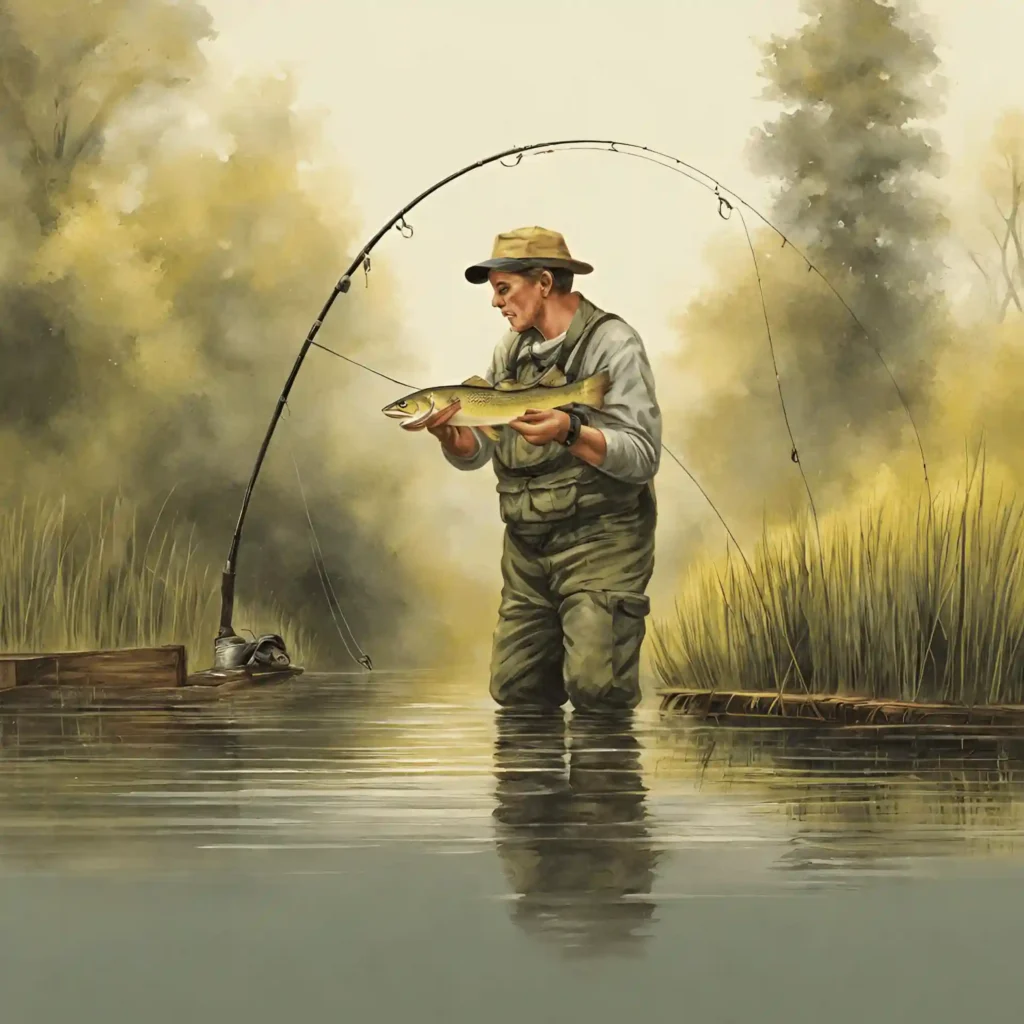Fishing is more than just a hobby for many; it’s a passion, a way to connect with nature, and a means to unwind.
As an avid angler myself, I understand the importance of having the right gear.
One essential piece of equipment that often gets overlooked is the fishing watch.
A good fishing watch can provide vital information such as weather conditions, moon phases, and tide times, which can significantly enhance your fishing experience.
In this article, I’ll review the five best fishing watches that I’ve personally tested and found to be exceptional.
Why You Need a Fishing Watch
Before we dive into the reviews, let’s discuss why a fishing watch is essential for any angler. Here are a few reasons:
- Tide Tracking: Knowing the tides can drastically change your fishing game since certain species are more active during specific tide phases.
- Lunar Phases: Many fish are affected by moon phases, so if you want to optimize your chances, this feature is key.
- Weather Monitoring: Being aware of the weather can keep you safe and increase your comfort during a long day on the water.
- Durability: Fishing can be hard on gear. A quality fishing watch is often rugged enough to withstand water splashes and harsh conditions.
Garmin Quatix 6X Solar:

When it comes to fishing watches, Garmin is a name that consistently delivers, and the Quatix 6X Solar is the epitome of what a top-tier fishing watch should be. Right off the bat, the solar charging capability caught my attention.
Thanks to its Power Glass lens, this watch can extend its battery life considerably, ensuring you never run out of juice during those extended fishing trips.
But that’s just the tip of the iceberg. The Quatix 6X Solar is loaded with features tailored specifically for anglers. The built-in tide data and fish migration tracking are game-changers, allowing you to plan your outings based on the most favorable conditions.
Additionally, the watch’s GPS and ABC (altimeter, barometer, and compass) sensors provide invaluable navigation and weather data, ensuring you’re always aware of your surroundings and potential changes in conditions.
One of my favorite aspects of this watch is its rugged design. With a sturdy stainless steel case and a durable sapphire crystal lens, the Quatix 6X Solar can withstand the rigors of saltwater fishing without batting an eye.
The buttons are large and easy to operate, even with wet or gloved hands, and the watch’s water resistance rating of 10 ATM means you can freely submerge it without worry.
Suunto Traverse Alpha:

If you’re an avid hiker and camper in addition to being a fishing enthusiast, the Suunto Traverse Alpha is a watch that deserves your attention. This versatile timepiece combines robust outdoor functionality with a sleek, lightweight design that won’t weigh you down during your adventures.
One of the standout features of the Traverse Alpha is its advanced GPS and navigation capabilities. The watch can track your movements, mark waypoints, and even provide breadcrumb trails to help you find your way back to your starting point.
This level of navigational support is invaluable when exploring unfamiliar waters or venturing into the backcountry in search of that elusive fishing spot.
For anglers, the Traverse Alpha shines with its dedicated fishing mode. This mode allows you to track moon phases, monitor weather conditions, and even set alarms for optimal fishing times based on your location. Additionally, the watch’s barometric altimeter and compass ensure you’re always aware of your surroundings, even in the most remote areas.
In terms of durability, the Traverse Alpha doesn’t disappoint. Its composite case is reinforced with stainless steel and can withstand drops, bumps, and exposure to the elements. The sapphire crystal lens is scratch-resistant, and the watch boasts a water resistance rating of 100 meters, making it suitable for all your aquatic adventures.
Features
- GPS/GLONASS Navigation: It offers precise navigation with GPS and GLONASS support.
- Moon Phase Calendar: The moon phase calendar helps you determine the best fishing times.
- Barometric Pressure: The barometric pressure sensor provides weather trend information.
- Automatic Shot Detection: Although designed for hunting, this feature can be useful for tracking fishing spots.
My Experience
The Suunto Traverse Alpha has been a fantastic addition to my fishing gear. The moon phase calendar and barometric pressure sensor are incredibly helpful for planning my trip
Casio Pro Trek WSD-F20:

If you’re in the market for a rugged and feature-packed smartwatch that can handle your fishing expeditions, the Casio Pro Trek WSD-F20 is an excellent choice. This Android Wear-powered timepiece combines the best of both worlds – the functionality of a smartwatch and the durability of a traditional outdoor watch.
One of the standout features of the WSD-F20 is its dedicated fishing app. This app provides detailed information on tide times, fish migration patterns, and even moon phase data, all of which can help you plan your fishing trips more effectively.
Additionally, the watch’s built-in GPS and offline mapping capabilities ensure you’re never lost, even in areas with poor cellular coverage.
In terms of ruggedness, the WSD-F20 is built to withstand the toughest conditions. Its military-grade construction and water resistance rating of 50 meters make it suitable for all kinds of outdoor activities, including fishing, hiking, and camping.
The watch’s display is also designed to be easily readable in direct sunlight, ensuring you can always check the time and access important information without squinting.
While the WSD-F20 may not have the same battery life as dedicated outdoor watches, its smart charging cradle and power-saving modes help extend its runtime considerably. And with the ability to install a variety of third-party apps, this watch can become a versatile companion for all your outdoor pursuits.
Features
- Triple Sensor: This watch includes a barometer, altimeter, and compass, which are essential for any outdoor activity.
- Tough Solar Power: It uses solar power to keep the battery charged, ensuring it lasts for a long time.
- Water Resistance: With a water resistance of up to 200 meters, it’s perfect for fishing in any conditions.
- Fishing Timer: The fishing timer feature helps you determine the best times to fish based on lunar data.
My Experience
The Casio Pro Trek PRW-3500 has been a reliable companion on my fishing adventures.
Garmin Fenix 6 Pro Solar:

If you’re looking for a top-of-the-line multisport GPS watch that excels at fishing, the Garmin Fenix 6 Pro Solar is an outstanding choice. This premium timepiece combines advanced fitness tracking capabilities with robust outdoor features, making it the perfect companion for anglers who lead an active lifestyle.
One of the standout features of the Fenix 6 Pro Solar is its solar charging capability. By harnessing the power of the sun, this watch can extend its battery life significantly, ensuring you never run out of juice during extended fishing trips or multi-day adventures.
When it comes to fishing-specific features, the Fenix 6 Pro Solar doesn’t disappoint. The watch provides detailed tide data, fish migration patterns, and even allows you to set alerts for optimal fishing times based on your location.
Additionally, the built-in GPS and navigation capabilities make it easy to mark waypoints, track your movements, and find your way back to your starting point.
But the Fenix 6 Pro Solar is more than just a fishing watch. It’s a true multisport companion that can track a wide range of activities, from running and cycling to swimming and hiking. The watch’s advanced fitness metrics, such as VO2 max and recovery time, provide valuable insights into your performance and overall health.
In terms of durability, the Fenix 6 Pro Solar is built to withstand the toughest conditions. Its reinforced polymer case and sapphire crystal lens can withstand scratches, bumps, and exposure to the elements, while its water resistance rating of 10 ATM means you can freely submerge it underwater without worry.
Timex Expedition Gallatin Solar:

If you’re on a budget but still want a reliable and feature-packed fishing watch, the Timex Expedition Gallatin Solar is an excellent choice. This affordable timepiece packs a punch with its solar-powered capabilities and outdoor-focused features, making it a great companion for anglers who love spending time in the great outdoors.
One of the standout features of the Gallatin Solar is its solar charging capability. By harnessing the power of the sun, this watch can extend its battery life significantly, ensuring you never run out of juice during extended fishing trips or multi-day adventures.
While the Gallatin Solar may not have the same advanced fishing features as some of the more premium models on this list, it still offers a dedicated fishing mode that provides tide data and moon phase information, which can be invaluable for planning your outings.
In terms of durability, the Gallatin Solar is built to withstand the rigors of outdoor adventures. Its lightweight yet sturdy resin case can withstand bumps and exposure to the elements, while its water resistance rating of 100 meters means you can freely submerge it in water without worry.
One of the standout features of this watch is its easy-to-read display. The large, clearly marked numerals and hands ensure you can quickly check the time, even in low-light conditions. Additionally, the watch features Indiglo night which illuminates the entire dial with a simple press of a button.
Features
- Shock-Resistant: Built to withstand tough conditions, this watch is shock-resistant to I.S.O. standards.
- Indiglo Light-Up Watch Dial: The Indiglo feature makes it easy to read the watch in low-light conditions.
- Water Resistance: It is water-resistant up to 100 meters, making it suitable for fishing.
- Chronograph: The chronograph feature allows you to track elapsed time, which can be useful for timing your fishing sessions.
My Experience
The Timex Expedition Shock CAT is a reliable and affordable option for anglers. Its shock-resistant design ensures it can handle rough conditions, and the Indiglo light-up dial is a handy feature for early morning or late evening fishing trips. While it may not have all the advanced features of some other watches, it provides excellent value for the price.
Conclusion
Choosing the right fishing watch can make a significant difference in your fishing experience. Each of the watches reviewed here offers unique features that cater to different needs and preferences.
The Garmin Instinct Solar stands out for its solar charging and GPS accuracy, while the Casio Pro Trek PRW-3500 offers reliable triple sensor functionality.
The Suunto Traverse Alpha is perfect for those who want a watch specifically designed for hunting and fishing, and the Timex Expedition Shock CAT provides excellent value for its rugged design. Finally, the Polar Grit X offers a range of features that make it a versatile option for any angler.
Ultimately, the best fishing watch for you will depend on your specific needs and preferences. I hope this review has provided you with valuable insights to help you make an informed decision. Happy fishing!

Meet Ibrahim Khan, an avid angler and author in Fishing Teach. He shares his wealth of knowledge from his 16 years of experiences in fishing. His articles are a captivating blend of practical insights and thrilling tales that invite readers into the enchanting world of fishing.
Ibrahim’s guides are your go-to guide in the realm of fishing on this informational site. Hailing from a coastal paradise, Ibrahim’s passion for angling is the heartbeat of his life.















































